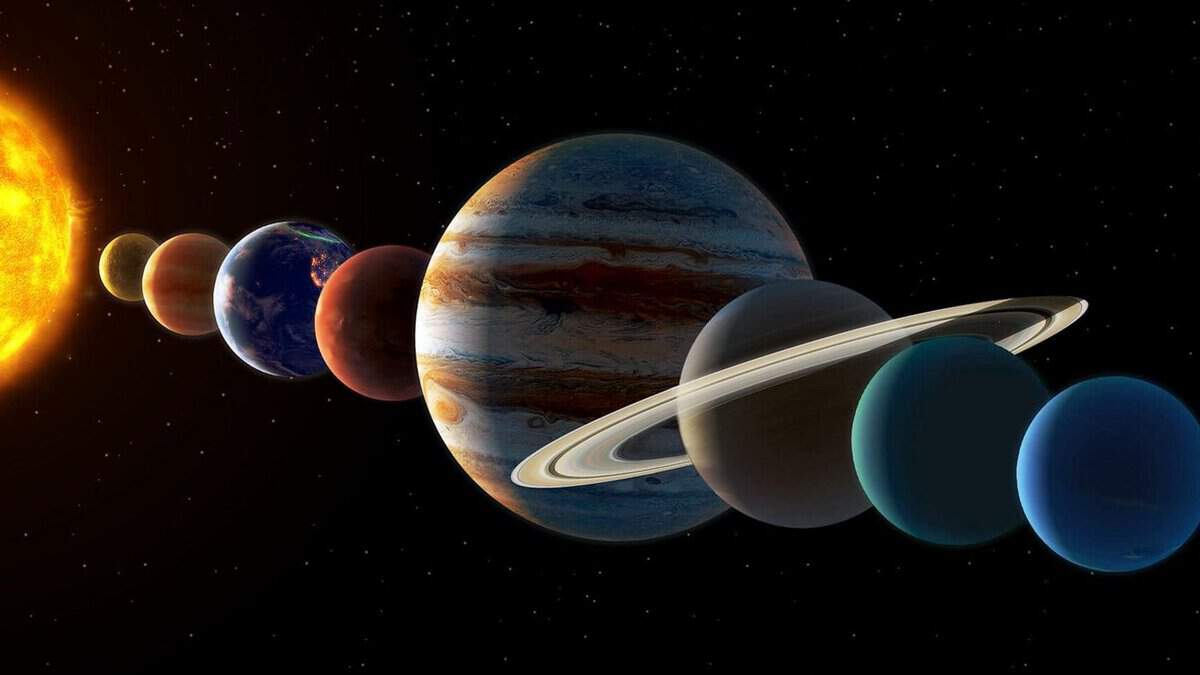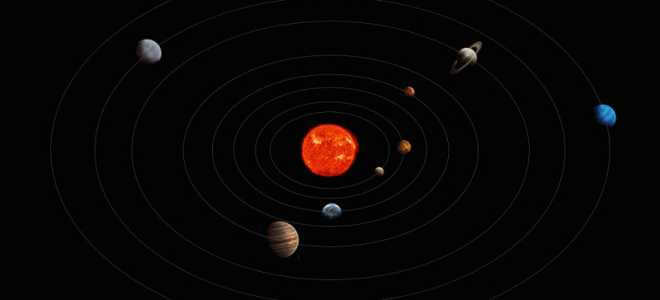
So, what exactly is a parade of planets? It’s not just a made-up concept, but rather an astronomical event where a certain number of planets in our solar system align in a straight line with a slight deviation of 20-30 degrees from the Sun. This means that they appear very close to each other in the sky.
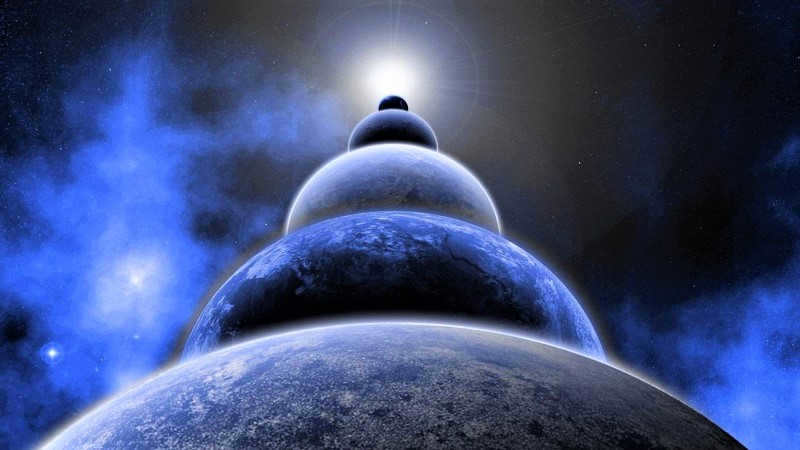
It should be noted that the official term “parade of planets” does not actually exist. It is primarily used to spread information about this rare phenomenon.
However, in the field of astronomy, there is a concept known as the conjunction of planetary bodies. This refers to their maximum convergence in terms of ecliptic longitude. During such a configuration, it is possible for one object to be obscured by another. For instance, the conjunction of the Sun and the Moon, which is referred to as an eclipse.
What is a planetary parade?
A planetary parade is an astronomical event where multiple planets align in a particular configuration. The visibility and frequency of these parades depend on the number of participating planets. There are different types of parades, including mini-parades consisting of three objects that occur once or twice a year. However, the visibility of these parades varies depending on the location on Earth.
Furthermore, a planetary parade can be either visible or invisible. For a parade to be visible, it is crucial that Mars, Saturn, and Jupiter align on the same longitude and are observed in the visible planets’ area. Additionally, Mercury and Venus should be in either western or eastern elongation.
In general, planetary parades can only be observed during the morning or evening.
For instance, an occurrence of this sort was documented on March 10, 1982, and it is anticipated that the subsequent one will take place around 2169.
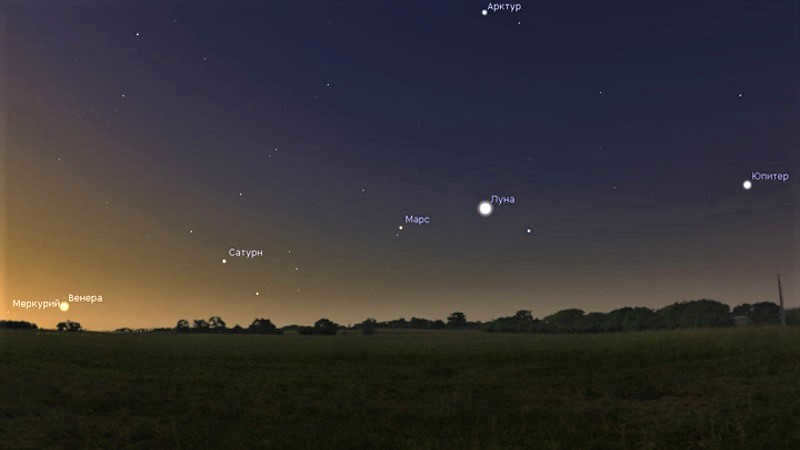
The frequency of planetary parades
Scientific experts have determined that a minor parade of planets takes place approximately every two decades, while a major parade is an exceedingly rare occurrence. Finally, the precise alignment of the planets on a single straight line happens, but with an extreme infrequency. It is estimated to happen once in every several million years.
- On March 10, 1982, all the planets were aligned on one side of the Sun in the same sector, forming an angle of 95 degrees.
- In late April and early May 2002, the constellations of Taurus hosted Mercury, Venus, Mars, and Saturn. At the same time, Jupiter was located in the neighboring constellation of Gemini.
- In May 2011, the constellations of Aries witnessed the gathering of Mercury, Venus, Jupiter, and Uranus.
- From July to mid-August 2020, Earth, Venus, Mars, Saturn, Jupiter, and then Mercury were positioned closest to a straight line.
According to astronomers’ calculations, the next complete alignment of planets is expected in 2162. We shall see, or rather our descendants will.
Interstellar procession
Essentially, this is the designated term for the occurrence when our planet Earth and the Sun align on the same equatorial axis, with the primary celestial body positioned at the epicenter.
Simultaneously, various components of the solar system and additional cosmic entities also align in a singular formation. In all honesty, such a spectacle has never been witnessed, thus rendering its existence purely theoretical.
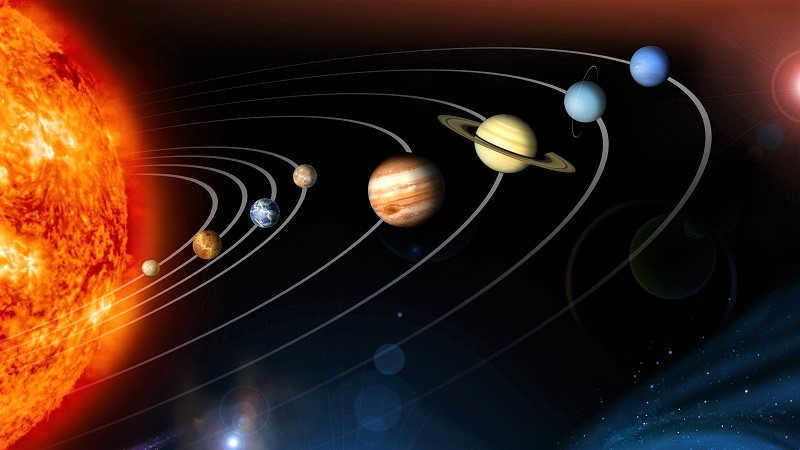
What is fascinating is that people have attributed various supernatural and religious qualities to this event. Naturally, the rarity of such occurrences attracts a great deal of attention. And when we cannot explain or define something, the easiest thing to do is to dismiss it as fiction, mysticism, or magic.
Thanks to advanced technology today, we are not only able to observe but also record the arrangement of celestial bodies.
Although officially the planetary parade may not exist, observations indicate that there are moments when the planets align in a single line.
Perhaps this is one of the remarkable and intriguing planetary phenomena that can be witnessed. Undoubtedly, it is a captivating and extraordinary spectacle.
The procession of planets is a truly magnificent spectacle of the cosmos. Since ancient times, humans have been captivated by this phenomenon. According to belief, the Mayan calendar concludes precisely on the day of the procession, signifying the impending doom of all life on our planet. However, this is merely an astronomical occurrence that happens at regular intervals.
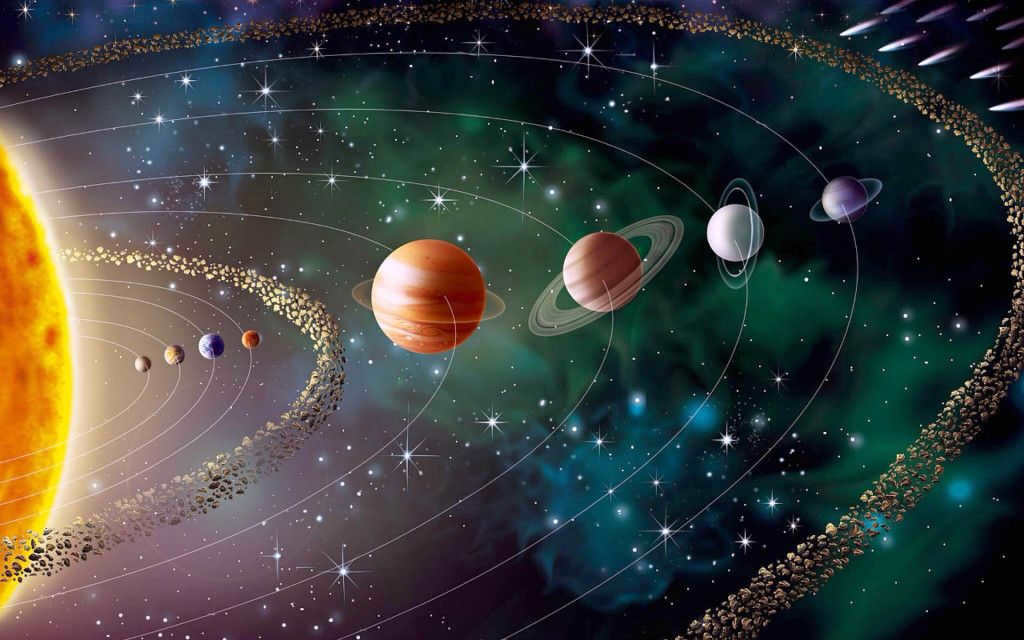
Varieties of planetary parade
Throughout the ages, the parade of planets instilled fear in the hearts of people, as they believed it could bring about the apocalypse. However, this catastrophic event never came to pass.
Astronomers from around the globe have observed this mesmerizing and extraordinary celestial phenomenon for countless centuries. Drawing from their extensive observations, they have categorized several types of parades:
- The Grand Parade – occurs every twenty years and involves the participation of six planets.
- The Small Parade – this annual event features the participation of only four celestial bodies.
- The Complete Parade – this significant event occurs once every 170 years, during which all the planets in our solar system align.
- Additionally, the parade has the ability to manifest both in a visible and imperceptible manner. The former pertains to the celestial arrangement wherein the five planets of our solar system traverse the nocturnal expanse, converging at an intimate proximity and materializing within a limited region of the firmament – approximately spanning 10-400. Typically, such parades unveil themselves during the twilight hours or the early break of dawn.
Among all the ancient parades of planets, it is the full one that has sparked various terrifying stories about the impending end of the world. Although this phenomenon is still not fully understood, and there is no information on how the close alignment of planets affects the Earth. Some believe that a full parade is capable of causing natural disasters and various catastrophes, but scientists have not yet confirmed this. As history has shown, nothing terrifying actually happens. The celestial bodies align in a row, without any global-scale catastrophes or apocalypse, but it is still a beautiful phenomenon to witness in the sky.
The best places to observe the parade of planets are in Europe and Russia. When this event occurs at the end of January or beginning of February, the planets can be seen with the naked eye.
The hidden procession of planets entails aligning both visible and imperceptible entities on a singular side of the Sun within a confined territory. In these particular instances, Venus and Mercury frequently remain concealed from view.
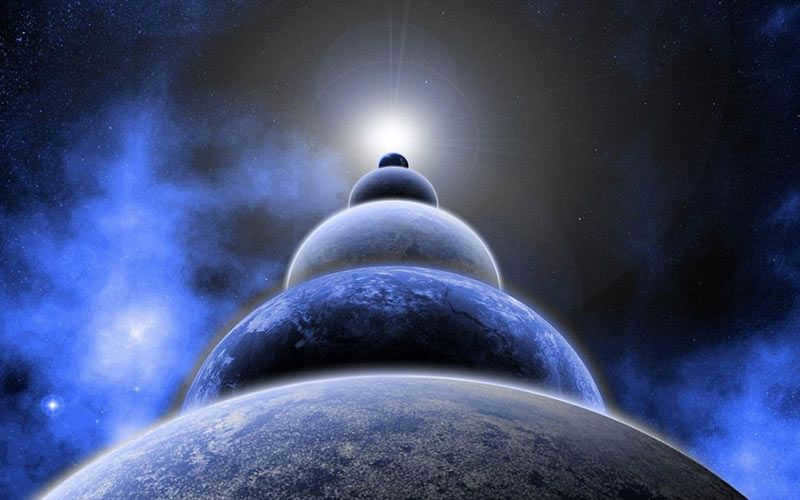
Celestial bodies
The parade of planets involves various celestial bodies. Different types of parades feature different planets. For instance, Saturn, Mars, Venus, and Mercury align in a small parade. A large parade occurs when six planets line up: Mars, Venus, Jupiter, Mercury, Saturn, and Uranus.
A mini-parade consists of only three planets. Occasionally, an extended mini-parade occurs when our Moon and bright stars align with the three planets.
The most significant event in our solar system is the full parade, which includes all the planets. The last time this phenomenon was witnessed was in 1982, when it was believed that there were nine planets.
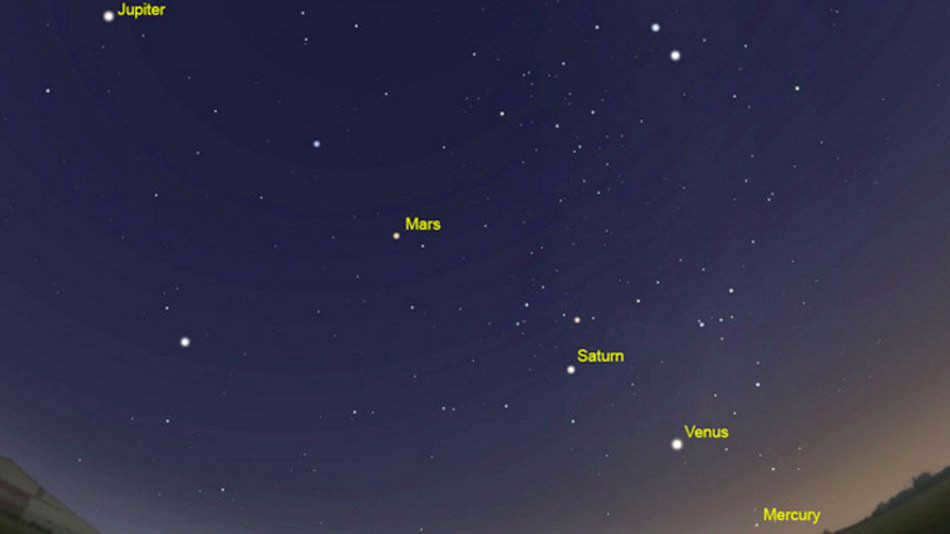
Dates
Recently, astronomers witnessed a small procession. It consisted of three planets – Saturn, Jupiter, and Mars, along with the Moon and two very luminous stars – Antares and Spica. This spectacle occurred on May 3, 2018. So, when can we expect the next planetary parade? It is expected that a similar alignment of celestial bodies will occur around a year from now.
Scientists anticipate that in March 2022, there will be a parade featuring Mars, Mercury, Saturn, Venus, Jupiter, and the Moon. However, it may not be visible to observers in Russia. But don’t despair, a parade of five planets – Venus, Mars, Mercury, Saturn, and Jupiter – will be clearly visible in June 2022. This particular combination of celestial objects is quite rare.
In 2017, a parade of six celestial bodies took place.
In 1982, the most recent complete parade took place, and the subsequent one is not scheduled until 2161. This extraordinary occurrence repeats every 170 years. All of the eight planets in the solar system partake in this spectacle, along with the former ninth planet, Pluto.
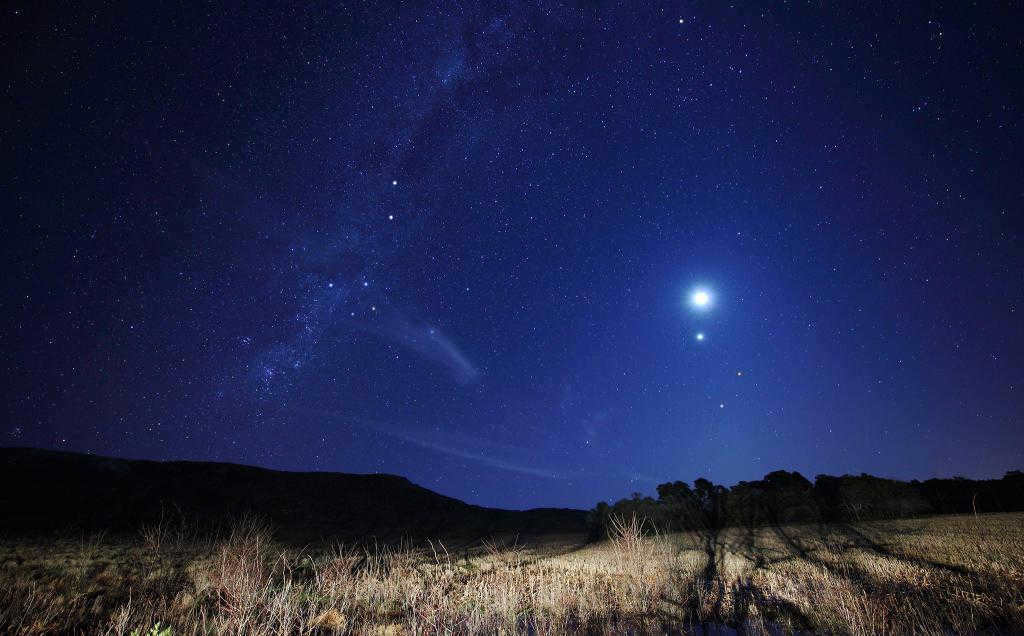
The Celestial Procession
Occasionally, a unique celestial event takes place where the Sun and the Earth align with the equator of our galaxy, creating a magnificent sight. During this phenomenon, the Sun appears at the very heart of our galaxy. Experts estimate that this extraordinary occurrence happens approximately once every 26,000 years.
During the solstice planetary parade, Mars, Jupiter, Saturn, Earth, and various other planets align in a singular formation, with the Sun positioned at the center of the Milky Way. On this particular day, not only do the planets within our own solar system align, but those from other systems also form a continuous line extending from the galaxy’s core. This is an exceedingly uncommon occurrence. Despite the skepticism among many scientists regarding this information, as no one has yet been able to empirically prove the existence of such a parade, let alone observe it firsthand. The notion of a galactic parade solely rests on assumptions, which have been transmitted to us via Mayan messages.
The photos presented showcase a captivating sight: all eight planets aligned in a single line with the Sun. How would this spectacle appear from the perspective of those distant celestial bodies?
From the vantage point of these distant objects, one would witness a planet passing another, followed by another, and so on. Essentially, if all the planets were positioned on the same side of the Sun simultaneously, Neptune would observe Uranus passing Saturn, which would then be followed by Jupiter, with Mars, Earth, Mercury, and Venus hiding behind as they traversed across the solar disk. However, such a scenario is unattainable. In reality, during this parade, Venus and Mercury remain unseen, as they are either positioned in front of or behind the Sun. The other planets, located on the same side as Earth, are visible throughout the night sky, while the remaining planets are concealed by our radiant Sun.
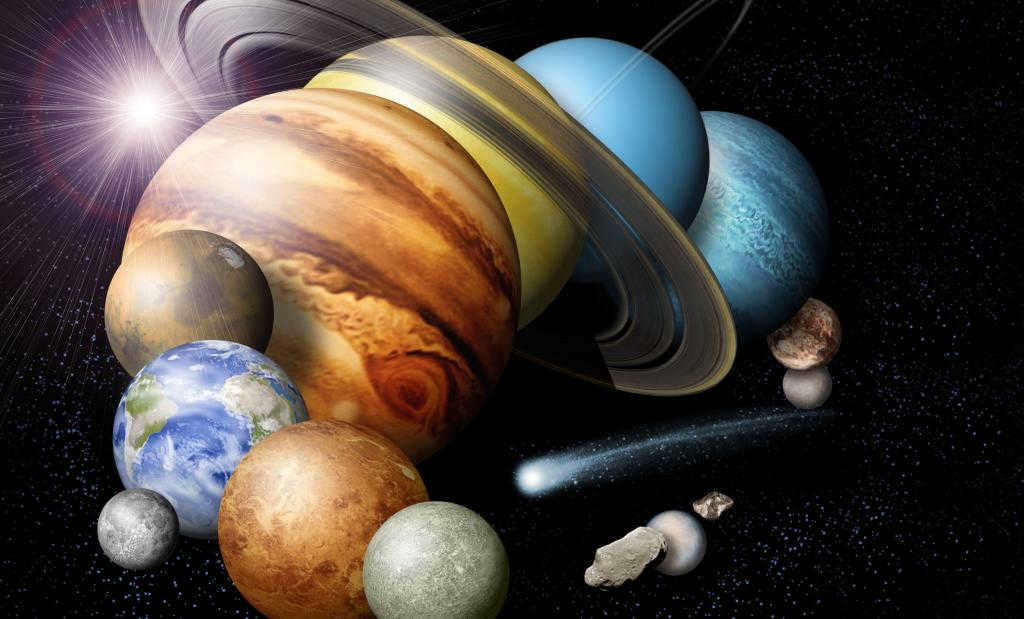
Summary
Having access to information about the dates of the parade of planets offers individuals the opportunity to witness a truly extraordinary astronomical event. This occurrence is remarkably uncommon and typically takes place once a year. There are a fortunate few who are able to witness a complete parade, although this is an incredibly rare phenomenon. It is hopeful that in the future, our descendants will have the ability to observe the complete parade, and perhaps they will even be able to view it firsthand from outer space. Currently, we can only marvel at the smaller, larger, and miniature parades, but even these occurrences are incredibly breathtaking, unique, and definitely worth experiencing.
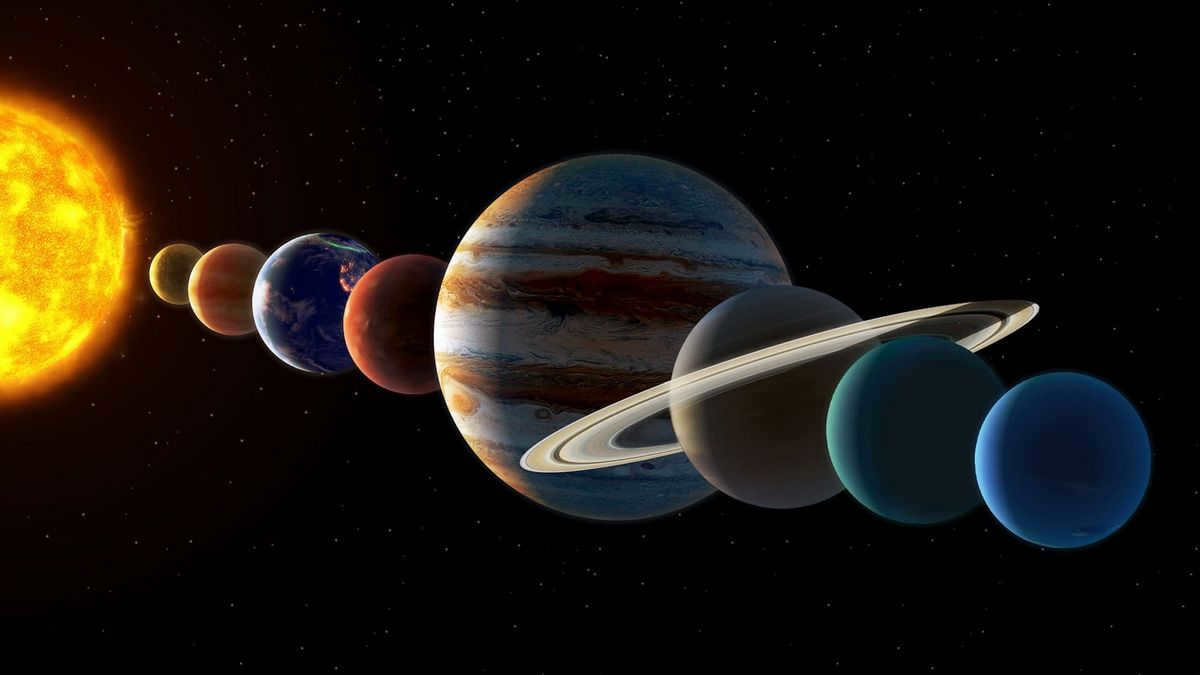
Planetary alignments are incredible astronomical events that can be observed without the need for any special equipment. This article will provide you with information on how to witness these alignments, when the most brilliant ones will occur, and the significance of this celestial phenomenon.
A planetary alignment refers to the occurrence when multiple planets align closely together on one side of the Sun.
A planetary parade is a colloquial term that generally means that several planets are visible in the night sky simultaneously.
Next, we will discuss the nearest alignment of the planets. If you are interested in learning more about the mechanics of planetary alignments in general, please refer to the section titled “What is a planetary alignment”.
Which planets will be visible during the upcoming alignment?
The next planetary alignment is scheduled for January 27, 2024. Three prominent planets, Venus, Mars, and Mercury, will align in the morning sky and can be observed with the naked eye in the constellation of Sagittarius.
Venus, with a magnitude of -3.9, will become visible approximately one hour before sunrise. It will be the most luminous celestial object until the Sun rises.
Following Venus, Mars and Mercury will rise. Mars, with a sidereal magnitude of 1.3, can be identified by its reddish color. In close proximity, you will find Mercury, with a sidereal magnitude of -0.2. On the same day, Mars and Mercury will come within 14.6 arc minutes of each other.
If you want to ensure accuracy in locating the planets, try installing Sky Tonight, an astronomy app that is completely free and simplifies the process of identifying celestial objects. By using this app, you can easily determine the name of any object in the sky above you. Just open the app and direct your device towards the sky, and you’ll be able to view the names of the planets along with additional information about each one.
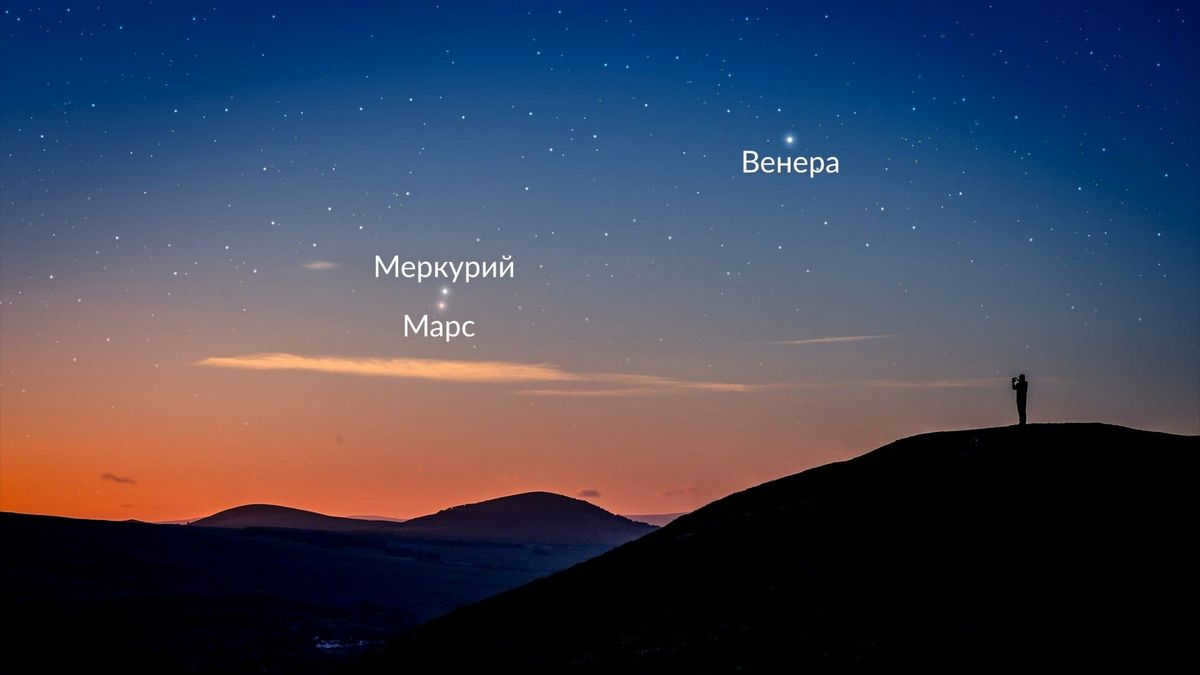
Please note that the alignment is generally visible in most parts of the world on January 27, 2024. However, the optimal date for observation may vary depending on your location. Below is a list of different cities and the specific dates when the planets in this alignment will be visible in the smallest portion of the sky for each city.
- Mexico City: January 26, with a 5-degree sector of the sky;
- Abu Dhabi: Jan. 27, with a 6-degree sector of the sky;
- Athens: Jan. 27, with a 9-degree sector of the sky;
- Hong Kong: Jan. 27, with a 6-degree sector of the sky;
- London: Jan. 27, with an 11-degree sector of the sky;
- New York: Jan. 27, with a 9-degree sector of the sky;
- Tokyo: Jan. 28., 9-degree portion of the sky;
- Sydney: Jan. 29., 7-degree portion of the sky;
- São Paulo: Feb. 20., 3-degree portion of the sky;
To discover the appearance of the planets from your location on a specific day, open the Sky Tonight application, choose the desired date and time in the “time machine” located at the top of the screen, and observe the sky map: you will be able to identify the position of celestial objects in your area.
Furthermore, this alignment is not limited to a single day, but can extend for several days before and after the mentioned date. Therefore, if you missed the opportunity on January 27, do not worry and attempt to observe the alignment on another nearby day!
Now, we will provide you with some recommendations on how to effectively observe this alignment.
To begin with, select the appropriate timing. In order to witness this alignment, it is necessary to determine the dawn time for your specific location and commence observation at least one hour in advance. You can ascertain the precise dawn time for your location by utilizing the Sky Tonight application. To do so, open the app and navigate to the “Today in the Sky” tab (represented by a telescope icon on the home screen). The second time displayed under the “Observing Conditions” section corresponds to the dawn time at your designated location on the chosen date.
First, ensure that you are observing the planets rather than the stars. This may not be as straightforward as it initially appears! You should be able to easily identify Venus, as it is the most radiant celestial object aside from the Moon. However, the other planets are slightly less bright. One distinguishing feature between planets and stars is that planets do not twinkle. Additionally, if you observe the night sky throughout the year, you might notice that the planets “travel” to different constellations, while the stars remain in a “fixed” position relative to one another.
The simplest method to determine whether you are viewing a star or a planet is by using the free Sky Tonight app:
Step 1: Open the app and point your device towards the sky or press the large blue button. The app will then present a real-time display of the sky above you and track the movements of your device.
Step 3: To view the object’s name on the screen, click on it. You can then click on the name to access additional information about the object.
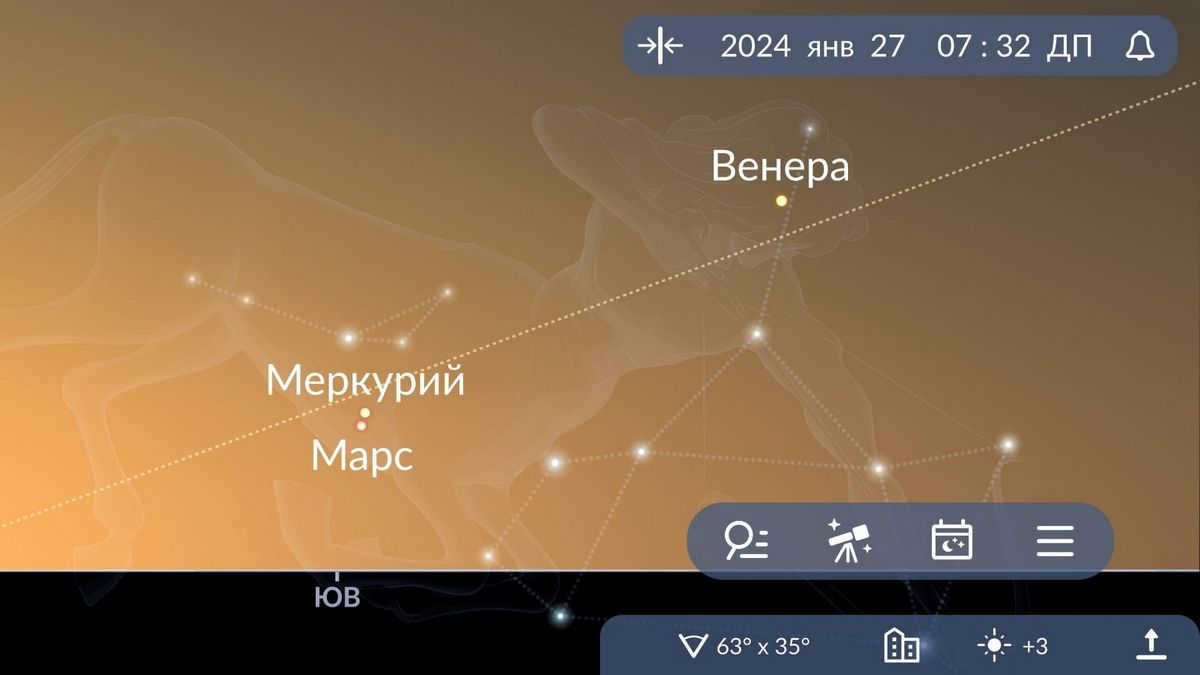
If you want to witness the magnificent planetary alignment, you need to locate a spot with minimal light pollution and an unobstructed view of the horizon, free from trees or tall buildings.
These concise instructions will assist you in observing the procession of planets. To effectively plan your observations, consult the subsequent list of planetary alignments in this article. However, we recommend delving into the underlying principles and comprehending the concept of planetary alignment and its timing first.
What Does Planetary Alignment Mean?
There are two primary definitions of planetary alignment:
- An astronomical event in which planets are positioned closely together on the same side of the Sun when observed from above the solar system.
Many individuals believe that the planets in our solar system can align perfectly with the Sun. However, in reality, the planets cannot align in all three dimensions of space. Even aligning all the planets within the same quadrant (a 90-degree sector) is exceptionally rare and will only occur seven times in this millennium.
- There is also a visual phenomenon that occurs when the planets appear close together in the sky as observed from Earth.
When the Earth and other planets align on one side of the Sun, it creates a visually stunning display for observers on Earth. The more compact the alignment appears in the sky, the more impressive it is.
It is important to note that these alignments may not always be spectacular when viewed from Earth. Even when all the planets gather in the same section of space, they can still appear scattered across the celestial sphere. Additionally, if the inner planets are too close to the line between the Sun and Earth, they may not be visible in the night sky.
Take a look at our infographic to gain a better understanding of planetary alignments. You will discover how to observe them and what to anticipate from the upcoming “parade of planets.”
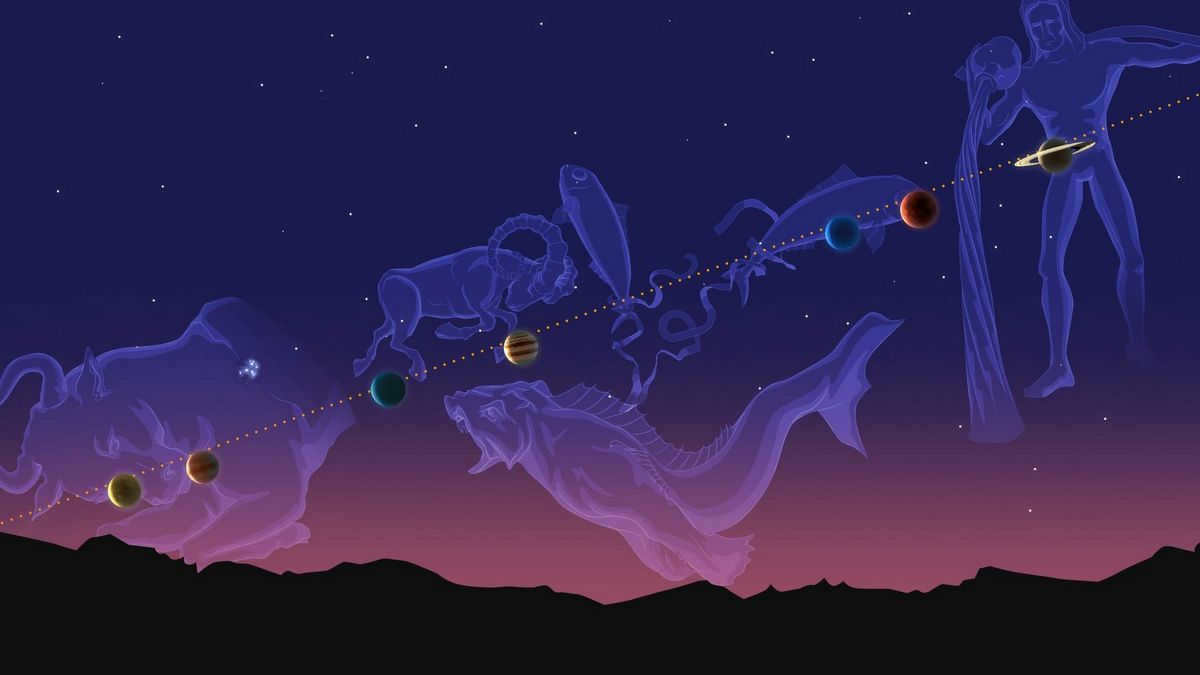
Discover what a planetary alignment entails, how to witness it, and when the next occurrence of the “parade of planets” will take place.
Do the planets align in a straight line during an alignment?
While the planets do align, they do not form a perfectly straight line. All planets orbit the Sun on a similar plane. Consequently, from the perspective of Earth, the planets appear to traverse along the ecliptic, which is the apparent annual path of the Sun across the celestial sphere. You can confirm this phenomenon using the astronomy application Sky Tonight:
- Launch the app and locate the yellow dotted line that intersects the Sun on the celestial sphere. This line represents the ecliptic.
- Follow this path and you will discover all the planets located nearby. Alternatively, enter the name of the specific planet you are interested in into the search box and click the blue targeting button next to it. The application will display the current position of the planet in relation to the ecliptic at any given time and date.
As you navigate along the ecliptic using the app, you may observe that it forms an arc spanning from one horizon to the other. However, within the confines of a phone screen, the ecliptic appears as a straight line in a small portion of the sky. Therefore, when planets converge in this limited area during an alignment, they give the illusion of being in perfect alignment in a straight line.
Is a planetary alignment the same as a planetary parade?
The term “planet parade” is informally used in astronomy and is more loosely defined compared to “planetary alignment”. While planetary alignments are commonly referred to as parades of planets, a parade of planets can also describe the occurrence of several planets being visible at the same time in the night sky. In astrology, a parade of planets refers to the phenomenon of multiple planets being aligned in the same zodiacal constellation.
Various Categories of Planetary Alignments
Depending on the number of planets involved, we can distinguish the following categories of planetary alignments:
- Mini planetary alignment – involving 3 planets.
- Small planetary alignment – involving 4 planets.
- Great planetary alignment – involving 5 or 6 planets.
- Complete (or full) planetary alignment – involving 7 planets (occasionally including Pluto).
When two celestial bodies come together in the atmosphere, it does not yet constitute an alignment. It may be a near conjunction or a conjunction of celestial bodies. In our feature article, you will discover comprehensive details about the closest planetary alignments.
Proximate celestial body alignments
Make plans to observe the celestial bodies in the upcoming years and even beyond! And make sure not to overlook the nearest alignment: we provide information about it in the initial section of this article, which is regularly refreshed.
Depending on your location, the same planetary alignment can appear different from different parts of the world. This is due to the position of the ecliptic on the celestial sphere, which may result in certain planets being invisible from your specific location. Therefore, please keep in mind that the following list provides a general overview. On the specified dates, the planets will be easily visible from most places on Earth. If you happen to miss the exact date, there’s no need to worry – the alignment is typically visible a few days before and after.
The upcoming planetary alignments in 2024 will be as follows:
- January 27: In the morning, there will be a mini-alignment of Venus, Mars, and Mercury.
- April 4: In the morning, there will be a minor alignment of Venus, Neptune, Saturn, and Mars.
- April 20: In the morning, there will be a significant alignment of Venus, Mercury, Neptune, Mars, and Saturn.
- June 7.: a significant morning alignment of Mercury, Jupiter, Uranus, Mars, Neptune, and Saturn.
- August 28.: a significant morning alignment of Mercury, Mars, Jupiter, Uranus, Neptune, and Saturn.
To determine if a specific planetary alignment is completely visible from your area, you can download the Sky Tonight app. Utilize the time machine feature at the top of the screen to select the correct date and explore the sky directly above you.
When will we see 5 to 7 planets in the sky?
Check out the upcoming planetary alignments below, where you’ll be able to witness the presence of five to seven planets:
- April 20, 2024: a remarkable morning alignment of Mercury, Venus, Mars, Saturn, and Neptune.
- June 7, 2024: get ready for a major morning alignment of Mercury, Mars, Jupiter, Saturn, Uranus, and Neptune.
- August 28, 2024: mark your calendars for a significant morning alignment of Mercury, Mars, Jupiter, Saturn, Uranus, and Neptune.
- January 18, 2025: don’t miss the chance to witness a major morning alignment of Mercury, Mars, Jupiter, Uranus, Neptune, and Saturn.
- February 28, 2025: this is the closest date when you’ll be able to see all seven planets – Saturn, Mercury, Neptune, Venus, Uranus, Jupiter, and Mars – aligning in the evening sky!
The most anticipated planetary alignments
Here are a few of the most discussed planetary alignments. They are noteworthy primarily because several of the planets involved are in close proximity to each other. Unfortunately, most of these events won’t occur for quite some time yet.
On September 8, 2040, the five planets visible to the naked eye (Mercury, Venus, Mars, Jupiter, and Saturn) will align in a straight line in the sky. The Moon’s crescent shape will also be visible between Venus and Saturn. The alignment is best observed starting at 7:30 p.m. local time.
March 15, 2080, six planets (Venus, Mercury, Jupiter, Saturn, Mars, and Uranus) will be visible in the morning sky. This alignment is significant because it includes the “grand conjunction” of Saturn and Jupiter, which will be only 6 minutes apart in terms of their angular distance.
On May 19, 2161, a rare astronomical event will occur as all the planets in our solar system, including Earth, will align on the same side of the Sun. This incredible alignment will be visible just before dawn.
Fast forward to November 7, 2176, and we will witness another remarkable alignment of all the planets in our solar system, including Earth. This time, the alignment will be observable in the sky after sunset, providing a breathtaking spectacle.
Jumping ahead to May 6, 2492, we can anticipate yet another extraordinary celestial phenomenon. Once again, all the planets in our solar system, including Earth, will align on the same side of the Sun. This alignment will be visible in the sky after sunset, offering a mesmerizing display.
Frequently Asked Questions
When is the upcoming planetary alignment?
The next parade of planets is scheduled for January 27, 2024, when Mercury, Venus, and Mars will align in the sky.
When was the most recent occurrence of a complete planetary parade?
The last time all eight planets were in alignment was on December 28, 2022. The planets occupied the same 153-degree portion of the sky, and the parade was visible shortly after sunset.
What is the name for the phenomenon when all the planets align in a row?
When all the planets in our solar system align, it is known as a “grand” or “full” alignment of the planets. It’s important to note that the planets cannot actually form a straight line in space, so instead they come together closely on one side of the Sun during the alignment.
Observing planetary alignments can be quite simple, especially if you keep a few things in mind:
- You can easily observe alignments involving Mercury either just after sunset or before dawn, depending on the date.
- For observing Uranus and Neptune, you will need binoculars.
- The best times to see the inner planets are during their greatest elongations, while the outer planets are best observed during oppositions.
Make use of the Sky Tonight app to locate all the planets in the sky and discover their visibility conditions.
The planets in our solar system never align in a perfectly straight line in space due to their orbits being in different planes. However, there are occasions when the planets align on the same side of the Sun and become visible together in the sky. The next full alignment is set to occur on February 28th, 2025. On this day, seven planets, namely Saturn, Mercury, Neptune, Venus, Uranus, Jupiter, and Mars, will be observable simultaneously in the sky.
What occurs when the planets align?
There are some false assertions that suggest that when the planets line up, it leads to tsunamis, earthquakes, and other global catastrophes. However, this misconception has been repeatedly disproven. The truth is that planetary alignments have no impact on gravity or human existence; instead, they are purely mesmerizing celestial occurrences.
In summary
Astronomy defines a planetary alignment as the event when multiple planets converge in a specific region of the celestial sphere. This occurrence is informally known as a “parade of planets”. The forthcoming alignment of these three celestial bodies is scheduled for January 27, 2024. Once nightfall arrives, these planets will become visible in the night sky. By downloading the Sky Tonight application, you can effortlessly locate and observe all of these planets!
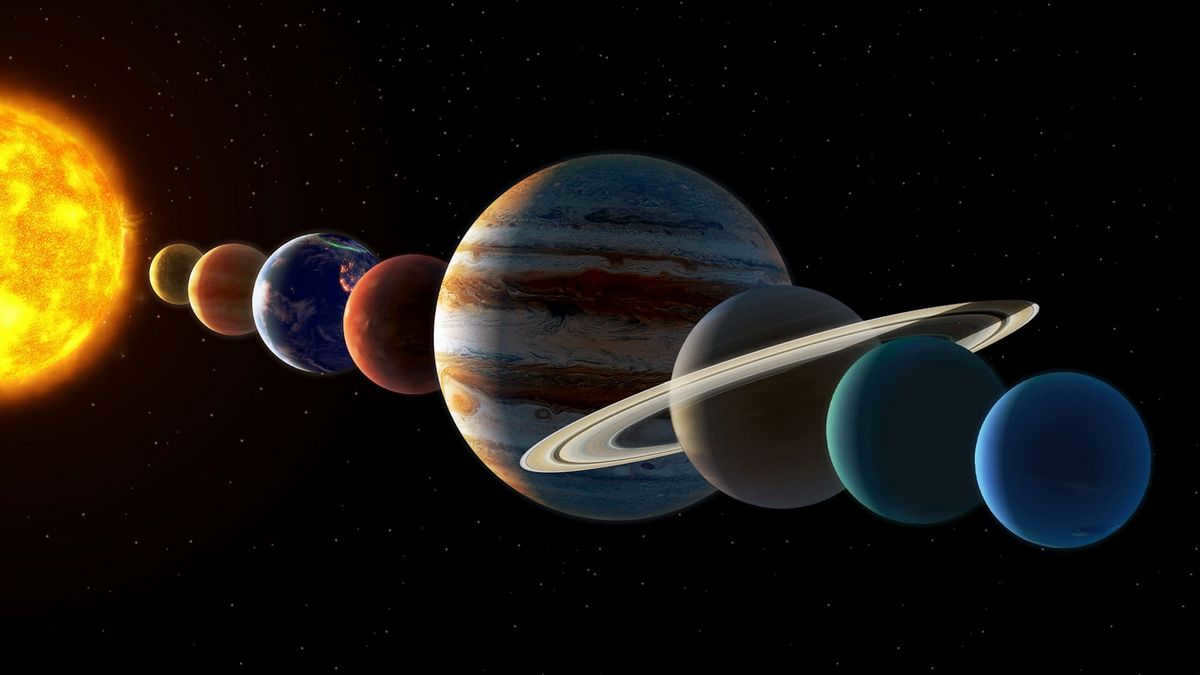
A planetary parade is a rare astronomical event where multiple planets align in a single line, deviating slightly by 20-30 degrees from the Sun.
Why not all the planets? Shouldn’t they all line up for a parade?!
No, typically only 4 or 5 planets participate in these parades. Astrologers refer to them as small or great parades, although there have been instances where all 9 planets aligned, such as in 1982.
The most “active” planets that participate in these parades are Mercury, Venus, Mars, Saturn, and Jupiter.
No, there is no definitive definition of star proximity in the field of astronomy. Therefore, the term “parade” is used qualitatively to describe the nature of the phenomenon rather than its fundamental properties.
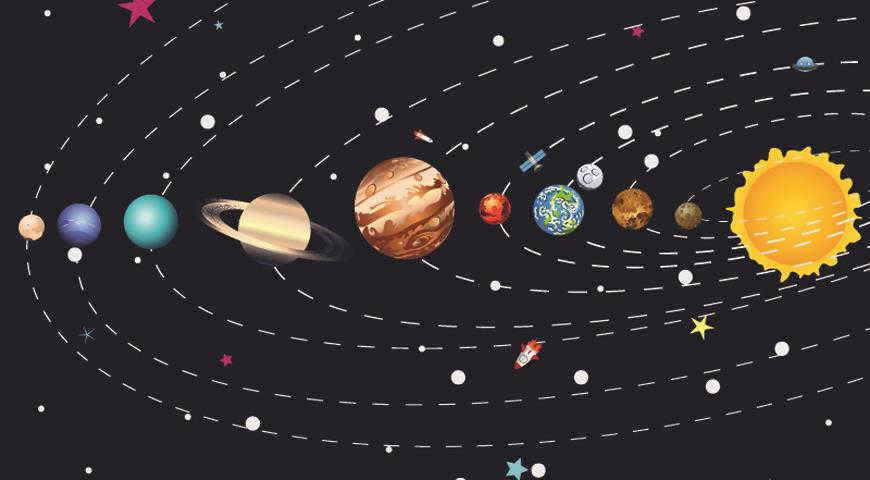
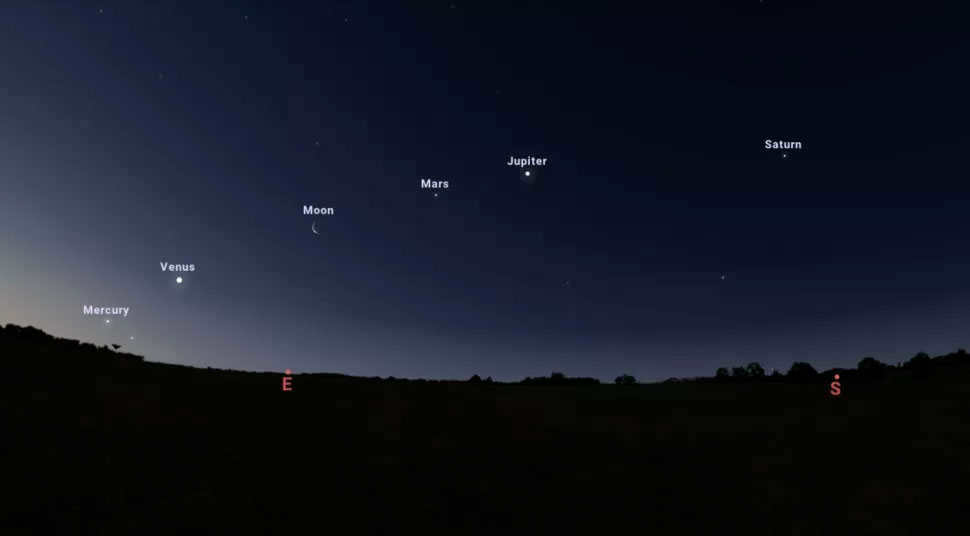
As we mentioned earlier, astrologers were the ones who decided to classify parades as either small or great, but these classifications are not based on real scientific definitions.
What are the requirements for all 5 planets to be visible?
- Mars, Jupiter, and Saturn should have approximately the same longitude and be visible near the inner planets (planets that are closer to the Sun, like the Earth).
- Mercury and Venus should be in eastern elongation during the spring and, for observers in the northern hemisphere, in western elongation during the fall.
However, it’s worth noting that Venus has a maximum elongation of 48 degrees (the angular distance between the Sun and the planet as seen from Earth), while Mercury has a maximum elongation of 28 degrees.
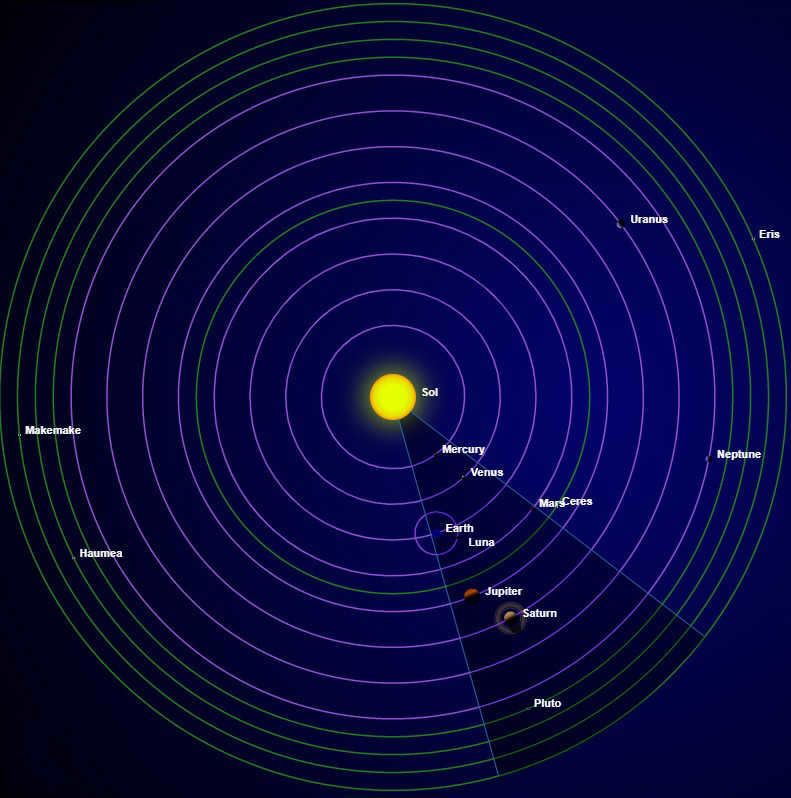
One can witness a procession of planets during the nighttime or early morning hours. As an illustration, in May 2011, there was an extraordinary parade of four brilliant planets (excluding Saturn) where Venus, Mercury, Mars, and Jupiter gathered in a relatively narrow sector of less than 10 degrees. This spectacle could be observed during the pre-dawn twilight, half an hour prior to sunrise.
However, the most crucial condition is the alignment of configurations involving at least three celestial bodies.
A configuration refers to the distinct relative position of cosmic bodies, including planets, stars, and even asteroid belts.
What is the frequency of the event?
The occurrence of mini-parades (if they can be referred to as such) with the participation of just 3 planets can be witnessed multiple times within a year. Parades involving 4 planets take place on a yearly basis, while grand parades featuring 5 planets occur once every few years.
What impact does it have on Earth?
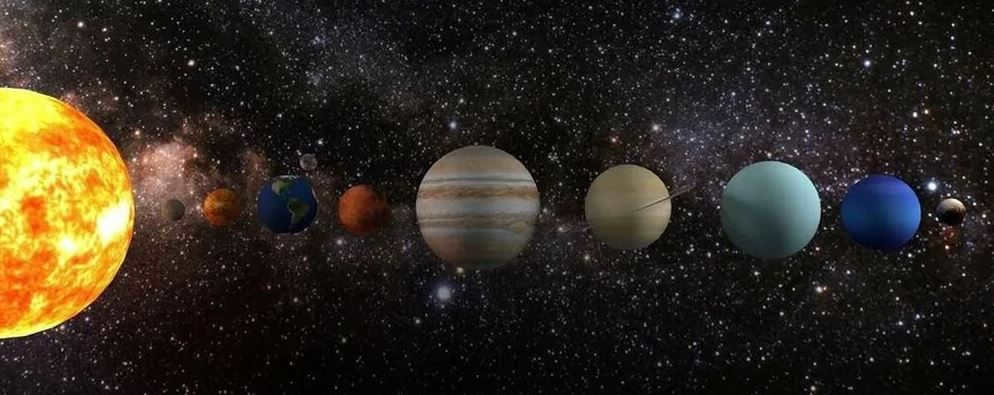
Parades can have an impact on us due to their gravitational force, however, they do not pose any danger to humans on Earth.
In the movie “2012”, the parade of planets caused a change in solar activity and subsequently led to catastrophes. However, the creators of the movie made it clear that it was a work of science fiction.
In addition, throughout the history of humanity, we have witnessed countless parades, and as you can see, we are still here on this beautiful and warm planet.
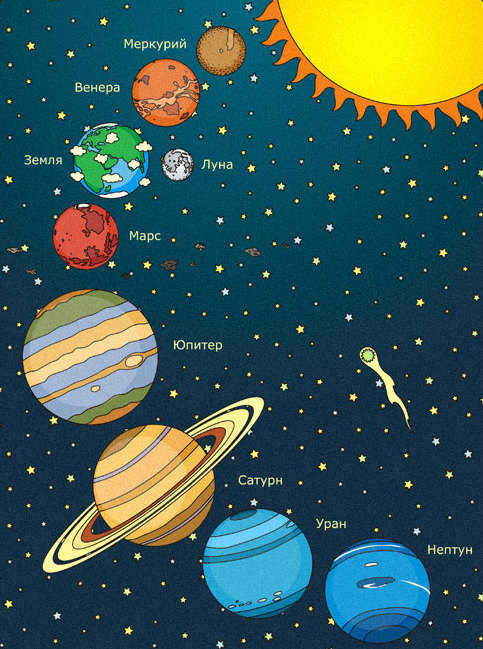
Strictly speaking, in no way, but let’s discuss everything systematically.
Jupiter, the largest planet in the Solar System, continues to hold that title. Moreover, this colossal celestial body occasionally participates in planetary parades and exerts the most potent influence on the other celestial objects.
Its impact can be likened to the Moon’s effect on Earth: along with the Sun, the Moon causes tides of up to 15 meters on our planet. However, Jupiter’s mass is significantly greater, and one would expect its influence to be immense!
Nevertheless, we do not experience floods during planetary parades, and that is because if we calculate the gravitational force exerted by Jupiter, it turns out to be 103 times weaker than the Moon’s gravity. Hence, we remain unaffected by the alignment of planets.
When is the next major parade scheduled to happen?
As stated by NASA, the next big parade is set to take place on September 8, 2040. The most recent parade involving 5 planets occurred on June 24, 2022.
A timeline of previous similar occurrences

- In March 10, 1982, an exceptional procession of nine planets (Mercury, Venus, Earth, Mars, Jupiter, Saturn, Uranus, Neptune, and Pluto, which was then considered a planet) gathered in a 95-degree sector on one side of the Sun. A fascinating fact: According to the book “Jupiter’s Influence,” such a parade was predicted to herald the most powerful earthquakes that would devastate Los Angeles, but no such occurrence took place.
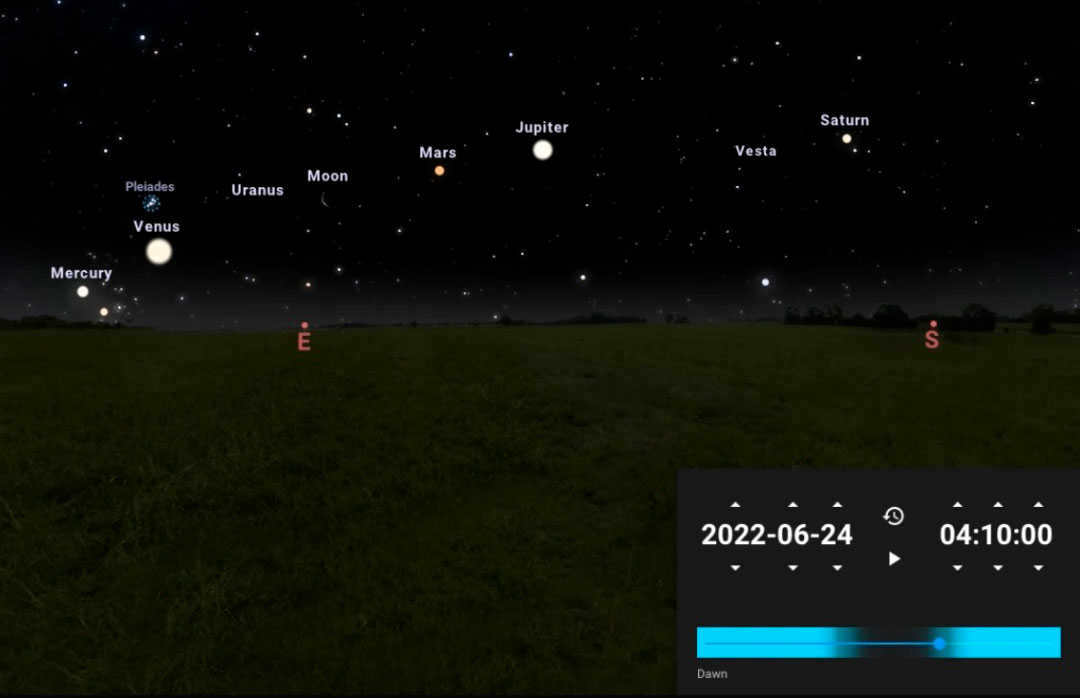
- In late April – early May 2002, there was a celestial event where four planets – Mercury, Venus, Mars, and Saturn – gathered together in the Taurus constellation, while Jupiter was in the Gemini constellation.
- In May 2011, there was another alignment of planets in the Aries constellation, as Mercury, Venus, Mars, Jupiter, and Uranus all came into alignment.
- During the period from early July to mid-August 2020, there was a unique configuration of planets. Jupiter, Saturn, Venus, Mars, Earth, and Mercury all aligned in a straight line, with Mercury joining the lineup on July 22.
Tips for Properly Observing this Event
Capture a photo as a keepsake, as you may not have the opportunity to witness the planets aligning again. So, be sure to document the event, as amassing a collection of celestial procession pictures will be an immensely gratifying achievement in the future.
Review of Science Facts Video
During the period from January 31 to February 7, 2016, there was a unique alignment of the Moon and five planets in our solar system – Mars, Venus, Jupiter, Saturn, and Mercury. This rare occurrence, known as a “parade of the planets,” was visible in the early morning hours before sunrise, provided the sky was clear. What does this extraordinary celestial event hold in store for us?
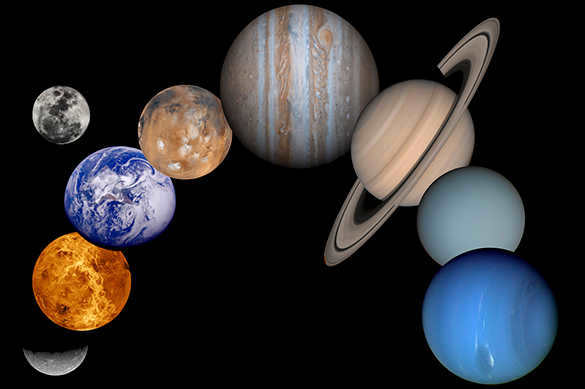
Parades of Various Sizes
There are parades of different sizes, ranging from small gatherings of four to six planets to large processions involving six or more celestial bodies. Additionally, there are both “visible” and “invisible” parades. A visible parade occurs when Mercury, Venus, Mars, Jupiter, and Saturn come close to each other and become visible in a specific section of the sky, typically spanning 10 to 40 degrees. Naturally, parades consisting of four planets occur more frequently than those with five or more celestial bodies. Furthermore, it is not uncommon to witness a lineup of three planets in a row once or twice a year. However, visible parades of planets occur only once in every 18 to 20 years.
The phrase “parade of planets” was coined by American astrophysicists Pleijmen and Gribbin. In anticipation of another occurrence of this phenomenon in 1982, they made alarming statements suggesting that it could lead to catastrophic events on Earth.
As early as 1974, scientists published a book titled “The Jupiter Effect,” featuring a depiction of planets aligned in a straight line on the cover. However, such a lineup is not something that actually occurs. Furthermore, the term “parade of planets” itself is not widely recognized as scientifically valid by most astrophysicists. Instead, it simply refers to the convergence of celestial bodies.
Heavenly Observations…
However, historically, celestial shifts in planetary positions have often been associated with mystical interpretations. In ancient times, such phenomena were often seen as ominous signs. For instance, in 1954 BC, the Chinese emperor, fearing the impending apocalypse, reset the calendar to zero in an attempt to appease the celestial powers…
Back in 1940, just before the outbreak of the Great Patriotic War, a remarkable celestial event took place – a planetary parade that could be observed with the naked eye. However, it wasn’t until February 2, 1962, that the most spectacular parade of planets occurred. On that day, Mercury, Venus, Earth, Mars, Jupiter, Saturn, and Uranus all aligned in perfect formation. The breathtaking phenomenon was further enhanced by a simultaneous solar eclipse. Interestingly, there were some who believed that this celestial alignment brought with it an ominous omen. Their fears seemed to be justified, as the world soon found itself on the brink of the Cuban Missile Crisis, followed by the tragic assassination of American President John F. Kennedy the following year…
Another remarkable planetary parade took place on March 10, 1982. This time, all nine planets of the Solar System, including Pluto, which was still considered a planet at that time, gathered on one side of the Sun. It was a sight to behold, as the planets formed a perfect sector with an angle of 95 degrees. Sadly, the same year also marked the passing of Leonid Brezhnev, the General Secretary of the CPSU Central Committee…
The Voyager Star Trek.
But let’s put aside omens and cinematography and focus on the field of astronomical sciences. Can alignments of planets truly impact the processes taking place on Earth?
Vladimir Surdin, a senior researcher at the Sternberg State Astronomical Institute of Moscow State University, proposes in his brochure “The Fifth Force” that when multiple planets align on one side of the Sun, it could potentially trigger tidal phenomena on the star. However, he does not believe that their influence on solar activity is completely straightforward.
“While, on one side, they result in the release of additional energy within the Sun’s convective envelope, on the other side, they disrupt its structure, along with the structure of the magnetic field, which is widely known to play a crucial role in the energy processes occurring on the Sun’s surface,” the scientist explains.
However, planetary alignments provide the perfect opportunity to launch spacecraft. In 1977, during another alignment, two Voyager spacecraft were sent into space for the purpose of exploring the solar system. Originally, the mission was intended to focus solely on Saturn and Jupiter, but thanks to the fortuitous alignment, the spacecraft were able to visit all the planets.
The next major planetary alignment is set to occur in March 2022, at a position of 38 degrees. However, it will only be in June that all five planets will be visible in Russia.

